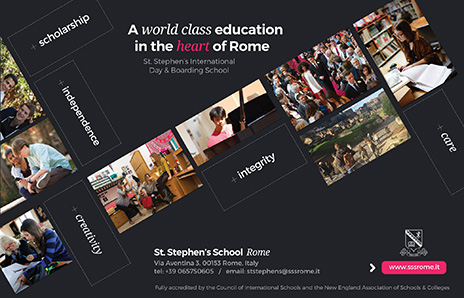Reimagining Public Diplomacy for the Digital Age
Three new books make a powerful case for reimagining the practice and the power of public diplomacy for the digital age.
BY VIVIAN S. WALKER
What is Public Diplomacy? Why does it matter to the conduct of foreign policy? How can it effectively promote state power and legitimacy in a competitive—and increasingly disruptive—digital environment? These questions of function, relevance, and effect have consistently beleaguered and occasionally undermined the practice of public diplomacy, defined here as a state’s effort to inform and influence foreign audiences in the service of its national interests.
Uncertainty about the nature and value of public diplomacy (PD) has contributed to the perception that it is an afterthought rather than integral to diplomatic practice. Former State Department Under Secretary for Public Diplomacy and Public Affairs Charlotte Beers noted that during her tenure, public diplomacy was viewed as a “barnacle on the ship of State.” Legendary U.S. Information Agency Director Edward R. Murrow had famously harsh words for the failure to include public diplomacy professionals at the policy “takeoffs” as well as the “crash landings.”
PD’s Origin Story

Three new books from practitioner, policy, and academic perspectives make a powerful case for reimagining the practice for the digital age, offering explanations and assessments of its potential while tempering expectations about outcomes. Multidisciplinary and expansive in their definition of key actors and practices, these studies reevaluate influence management in a highly contested media environment.
Bruce Gregory’s American Diplomacy’s Public Dimension: Practitioners as Change Agents in Foreign Relations (Palgrave Macmillan, 2024) fills a critical knowledge gap about the history, evolution, and nature of American public diplomacy, giving it an origin story and a philosophical foundation. Drawing on extensive experience in the oversight of U.S. government public diplomacy institutions and practices, Gregory offers an informed and proactive defense of PD as an essential tool of statecraft.
Perhaps most importantly, American Diplomacy’s Public Dimension highlights public diplomacy’s centrality to the practice of diplomacy. Diplomacy, as Gregory defines it, is “an instrument used by states … sub-state and non-state actors to understand cultures, attitudes and behaviors; build and manage relationships; and influence thoughts and mobilize actions to advance their interests and values.” In other words, diplomacy is an essentially public function, relying on the use of information and influence strategies to further foreign policy objectives. By placing PD at the heart of diplomacy rather than relegating it to a secondary support function, Gregory makes a persuasive case for its enduring relevance.
The first major scholarly work to explore early prototypes of American public diplomacy, the book reframes pivotal moments in colonial and revolutionary history, highlighting the cross-cultural nature of nascent American diplomatic practices. This historical overview covers the transformative communication technologies that have driven major shifts in public diplomacy institutions and practices. Despite our current preoccupation with the digital age, diplomatic communications were similarly disrupted (and empowered) by the effects of the telegraph, telephone, radio, and television.
Gregory identifies a set of unique and enduring patterns in American diplomatic practices, including an episodic focus on public diplomacy that coincides with existential threats to national interests. Those interested in institutional reinvention would do well to remember that all major shifts in PD priorities, institutions, and practices have been motivated by conflict. World War I led to the formation of the Creel Committee; World War II led to the emergence of the Voice of America; the Cold War led to the establishment of the U.S. Information Agency (USIA); and the Global War on Terror led to a series of counterterrorism communications centers within State.
In keeping with what Gregory identifies as the social nature of diplomatic engagement, his book offers a definitive expansion of the community of practice, broadening the definition of a PD practitioner well beyond the diplomatic service. Although driven by rivalries, competing interests, and distinct, sometimes incompatible, operational imperatives, these “change agents,” as he calls them, make an elegant case for the robust give and take of democracy.
Diplomacy is an essentially public function, relying on the use of information and influence strategies to further foreign policy objectives.
At the same time, Gregory calls out the historical tension between “ideals and self-interest” inherent in American diplomacy, and the use of American exceptionalism as a “rationale for strategies that combine hard power—force, intimidation, and bribery—and the soft power attraction of ideals, resources, and alliances.” He makes a cogent case for the risks and costs associated with an “outsized view” of American “virtue, democracy, and capacity to steer history.” As we know all too well, nothing is more damaging to U.S. soft power than public perceptions of the gap between its values and its actions.
Ultimately, this book pushes on the boundaries of diplomacy’s public dimension, providing helpful advice about the embrace of disruption, the cultivation of lateral knowledge, and the mitigation of resource constraints. Unfortunately, these are not qualities easily captured in government institutions and practices. Gregory is right about the rich and multitudinous history of American diplomacy’s public dimension but has little to say about how these qualities can be operationalized within a bureaucracy.
Reevaluating Soft Power

While Bruce Gregory creates a unifying origin story for American public diplomacy, historian Nicholas Cull offers a groundbreaking reevaluation of soft power and the projection of national legitimacy in the global media space. In Reputational Security: Refocusing Public Diplomacy for a Dangerous World (Polity, 2024), Cull argues that Joseph Nye’s conception of soft power, “a perfect idea for the post–Cold War world,” has run its course. The era of “benevolent unipolarity” has been overtaken by the “return of full-fledged power competition in a media-saturated age” and weakened by unprecedented and disruptive developments in information technologies.
In this environment, Cull argues, the unilateral “beauty pageant” of soft power attractiveness that focuses exclusively on the positive aspects of national values and policies cannot protect relatively unknown countries against the corrosive effects of a fractured information space in which a country’s shortcomings can easily become a strategic vulnerability.
Enter Cull’s transformational reformulation of soft power attractiveness—reputational security, or “the idea that if and when a country is well thought of and seen as relevant by international audiences, it fares better in moments of crisis than states that are unknown.” States with reputational security are “more likely to find allies” and to have their behaviors in the international arena seen as credible and worthy of support, especially when a challenge emerges.
Indeed, much of Cull’s inspiration for Reputational Security derives from “the shock of 2014”: “Ukraine’s loss of territory with little response from the global public—serves as an object lesson of exactly what can happen to a country if its national narrative is not known.”
Ukraine has since made dramatic improvements to its image projection, positioning itself in 2022 as the champion of democracy on the front lines of freedom. Other striking examples include Taiwan’s effort to build and preserve its reputation in the face of Chinese aggression, and Kazakhstan’s affirmation of pluralism as an antidote to external perceptions of its social and economic inequities.
In addition to filling critical knowledge gaps about a country, a successful reputational security campaign can address perceived shortcomings in its behaviors and policies, or, as Cull says, “accentuating the positives while eliminating the negatives.” Chapters on counterpropaganda, media development, information disarmament, diaspora engagement, and cultural relations offer comprehensive and accessible pathways to the enhancement of reputational security.
Nothing is more damaging to U.S. soft power than public perceptions of the gap between its values and its actions.
In truth, the concept of reputational security works best when applied to countries appealing for support during a clearly defined existential crisis such as an invasion or environmental disaster. Cull is correct that a “secure national reputation requires policies that protect the integrity of the most admirable elements of that nation, akin to the quality control mechanism of a corporation.” But a country is not a business. There is no “quality control” when it comes to policy outcomes—or how publics perceive them.
By arguing that efforts to improve public perceptions of a country’s image can be improved by positive changes to national policies, Cull sets an impossibly high bar for the practice of PD. Public diplomacy can explain and contextualize a country’s policies, but it can’t alter them. Moreover, like Gregory, Cull has no ready solution for the functional integration of reputational security management into existing public diplomacy institutions. He writes: “There is no clear strategy in play and certainly no vision of the kind necessary to rally the U.S.” in the global imagination.
Exploring New Trends

While Cull and Gregory seek policy and practitioner-driven approaches to the definition, legitimization, and institutionalization of public diplomacy, Eytan Gilboa looks at these issues from a scholar’s perspective. His Research Agenda for Public Diplomacy (Edward Elgar Publishing, 2023) offers a carefully curated overview of recent trends in PD scholarship, teaching, and practice, while also establishing a research agenda for the next decade. Acknowledging the “considerable” gap between theory and practice that has long frustrated practitioners and scholars, Gilboa seeks to establish a “common language” for public diplomacy while mapping out the boundaries of the discipline.
Although academic in focus, this collection of essays by emerging and established scholars is refreshingly accessible to practitioners, policymakers, and even those new to the field. As editor, Gilboa deftly organizes Research Agenda around three new trends in public diplomacy scholarship: the growing diversity of PD actors, the creative reformulation of PD as a discipline, and long overdue redefinitions of PD instruments.
Part I, with its focus on state and non-state actors, reveals how international organizations leverage institutional assets in the service of public diplomacy interests. Here, too, are insights into the growing coordination between corporate and government PD actors, as well as the extent to which digital empowerment has put ordinary citizens at the nexus of globalization, democracy, and civil society development.
Part II will appeal to public diplomacy scholars and practitioners in search of a historical overview of the discipline as well as a review of emerging trends and practices. These include new ways to think about soft power, the overlap between PD and public relations, changes to the relationship between PD actors and their audiences, and the relatively new development of a theory of management for PD professionals.
Part III explores how the digital age has transformed the use of traditional instruments of public diplomacy. These shifts include the emergence of non-human actors and stakeholders, the value of face-to-face exchanges in an increasingly digital context, the impact of digital technologies on diplomatic norms and values, and the integration of live and digital elements in the new “hybrid” public diplomacy.
Happily, as Gilboa notes, there is a growing consensus that public diplomacy deserves serious attention as a legitimate science, or method of inquiry, and that the findings of this science merit serious attention from foreign affairs policymakers, especially when it comes to confronting contemporary challenges to national power and legitimacy in the digital media space.
Unfortunately, this is where practitioners and scholars inevitably part ways. While scholars can indulge in the pursuit of meta constructs, practitioners and policymakers are on the hook for concrete answers.
However, while research has arguably lessened confusion about the value of public diplomacy to foreign policy, there remains “a considerable gap between scholars and officials and theory and practice.” Gilboa’s desire to build a set of navigable bridges between scholarship and practice has been thwarted by the emergence of more and more “islands of theory.” The multiplicity of disciplinary approaches to PD threatens to overwhelm efforts to make sense of them.
Gilboa’s solution? More “theory construction … not only to guide research, but also to unify and consolidate” it. In short, says Gilboa, we need “a unifying theory of theories of public diplomacy.” Unfortunately, this is where practitioners and scholars inevitably part ways. While scholars can indulge in the pursuit of meta constructs, practitioners and policymakers are on the hook for concrete answers.
 §
§
Gregory, Cull, and Gilboa each make a powerful case for the emergence of a multidisciplinary, innovative, and expansive practice equal to the challenges of a digital age. They elevate, in turn, the centrality of diplomacy’s public dimension, public diplomacy’s essential role in the defense of national security, and the importance of examining PD from multiple disciplines and theoretical frameworks. Their serious and knowledgeable attention to public diplomacy is a great service in an environment in which the practice is poorly understood outside its narrow band of devoted practitioners.
Alas, none of the three provides much in the way of solutions to persistent deficits in leadership and resources. The problem remains that so much is expected of PD actors and institutions: to positively influence global public attitudes toward government policies and behaviors; serve as the standard-bearer of national political values; and shore up state legitimacy in contested media spaces.
And yet public diplomacy remains the most undervalued element of foreign policy—no other instrument of national power is called on to do so much with so little.
When sharing or linking to FSJ articles online, which we welcome and encourage, please be sure to cite the magazine (The Foreign Service Journal) and the month and year of publication. Please check the permissions page for further details.
Read More...
- “A Strategic Approach to Public Diplomacy” by Joe B. Johnson, The Foreign Service Journal, May 2015
- “Public Diplomacy: Re-engaging the World” by Sherry L. Mueller and Joel A. Fischman, The Foreign Service Journal, March 2021
- “AI and the Future of Public Diplomacy” by Vivian S. Walker, USC Center on Public Diplomacy CPD Blog, August 2023




